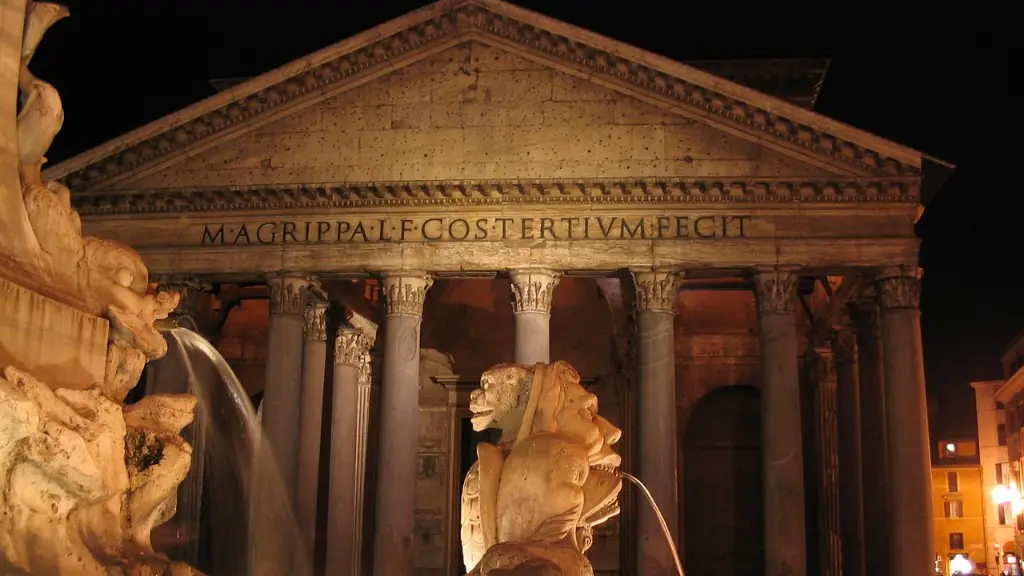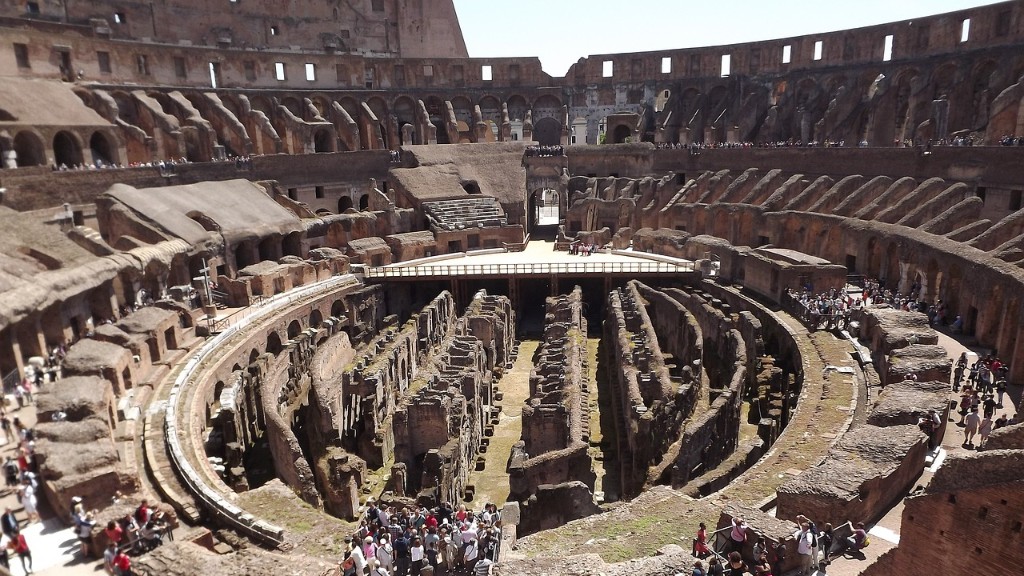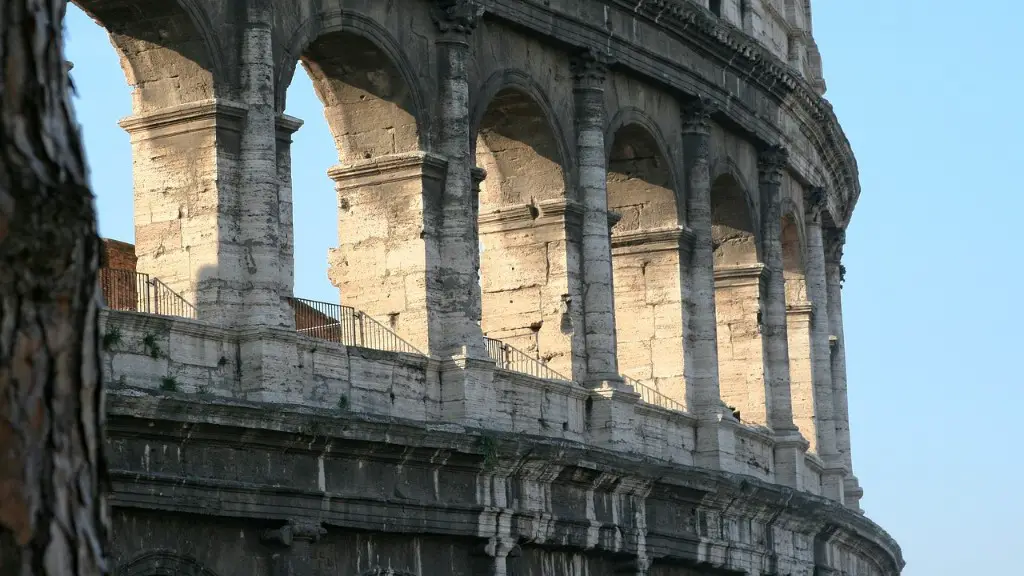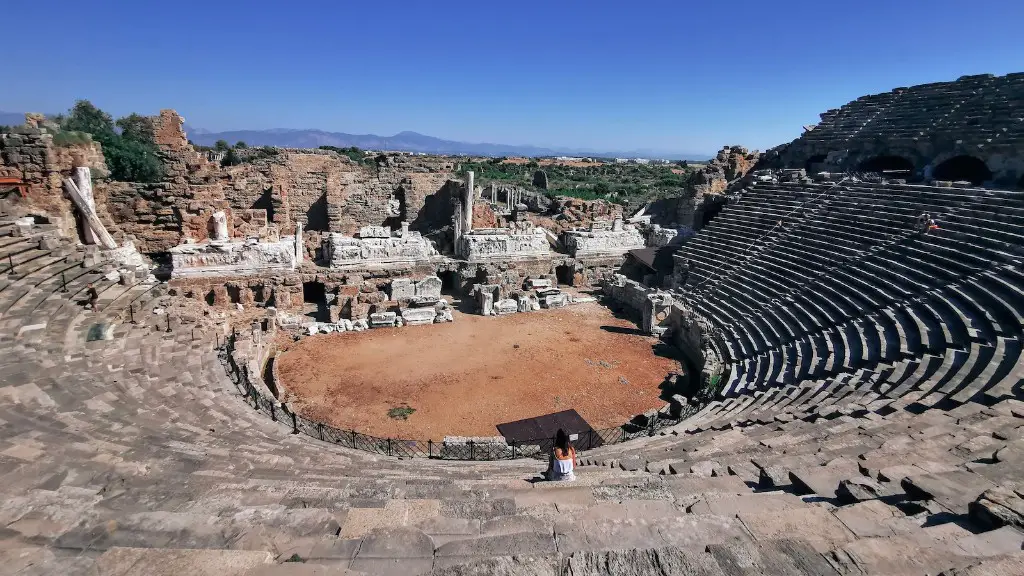Roads were an essential part of the Roman Empire, allowing for the transport of goods and people across the vast territory. The ancient Romans built their roads using a variety of materials and methods, depending on the terrain and the purpose of the road. In general, however, the construction process followed a similar pattern. First, a foundation of large stones was laid. On top of this, a layer of smaller stones was added, followed by a layer of gravel. Finally, a layer of paving stones was laid, and the road was smoothed with a roller. This process resulted in a durable and level surface that could support the heavy loads of Roman traffic.
The ancient Romans used a system of raised stones or paving stones to create a level surface for their roads. The roads were constructed by first laying a foundation of large stones. A layer of smaller stones was then placed on top of the large stones. The smaller stones were then compacted together with a ramming tool. Finally, a layer of gravel was placed on top of the smaller stones.
How do Roman roads last so long?
The roads that the ancient Romans built were some of the most impressive feats of engineering in their time. The roads were made from aggregates – lots of different sized stones that compacted down to create a strong, stable and long-lasting surface. These roads could stand up to the marching of hundreds of soldiers, and carts laden with supplies. The roads were an important part of the Roman empire, and helped them to maintain their control over such a large area.
The Roman roads were built for the purpose of moving troops and supplies efficiently. They were notable for their straightness, which helped with navigation, and for their solid foundations and cambered surfaces, which facilitated drainage. The use of concrete made from pozzolana (volcanic ash) and lime was another distinguishing feature of Roman roads. This type of concrete was strong and resistant to the elements, making it an ideal material for road construction.
How long did it take to build Roman roads
The expected rate of construction for roads was 1 1/2 yards (135m) per man per day. In some cases, 2 yards per man per day was achieved.
The Romans built straight roads because they wanted to travel as quickly as possible. Winding roads took longer to get to the place you wanted to go and bandits and robbers could be hiding around bends.
Do any Roman roads still exist?
Roman roads are still visible across Europe. Some are built over by national highway systems, while others still have their original cobbles—including some of the roads considered by the Romans themselves to be the most important of their system. The fact that these roads are still visible today is a testament to the engineering skills of the Roman builders.
Concrete is a composite material made from a variety of different ingredients, including cement, aggregate (e.g. sand, gravel, or crushed stone), water, and chemical admixtures. The strength of concrete is often due to the inclusion of pozzolanic ash, which helps to prevent cracks from spreading. However, recent research has shown that the incorporation of lime clasts can also help to improve the strength of concrete and allow it to self-repair any cracks that may form.
How thick were Roman roads?
The Roman roads were built on a sand-and-mortar bed and were as thick as 5 feet. The roads were used for transportation and communication between the various parts of the Roman Empire. The roads were built in such a way that they could be used by both pedestrians and carts.
According to researchers from MIT, the secret to Roman concrete’s longevity is its white lime clasts. These small white chunks are found throughout Roman concrete, but not in modern concrete. The lime clasts help to bind the concrete together, making it stronger and more durable. The researchers are working on developing a modern concrete that includes lime clasts, which they hope will be as long-lasting as the Roman concrete.
How many layers did a Roman road have
The Romans were known for their engineering and construction abilities, and their road-building methods were no exception. When it came to the actual building, the Romans used a three-layer system to ensure that the roads would be sturdy. The first layer consisted of mud, stones, rough gravel, and crushed bricks on a level surface, followed by sand or fine gravel. The last layer was made up of gravel or concrete. This system made for roads that were both durable and long-lasting.
Roman builders were very resourceful and used whatever materials were at hand to construct their roads. Their design always employed multiple layers for durability and flatness. Crews began by digging shallow, three-foot trenches and erecting small retaining walls along either side of the proposed route. This created a firm foundation for the roadbed. The next layer consisted of larger stones that were packed together with mortar. The top layer was made of large, flat stones that were tightly fitted together. This created a smooth surface that was suitable for travel.
How many layers were in a Roman road?
A Roman road typically contains four layers. The first layer is the statumen, a layer of large stones. The second layer is the rudus, a layer of gravel in concrete. The third layer is the nucleus, a layer of sand and smaller gravel in concrete. The fourth and final layer is the pavimentum, a layer of tightly packed earth.
It is amazing how much work went into building and maintaining roads 800 years ago. It is a testimony to the engineering skills of those people. Today, we take roads for granted, but it is important to remember how much effort it took to build them in the first place.
Are Roman roads really that good
The Roman roads were some of the best in the world at the time, but through modern technologies, we have been able to greatly improve on their design and build stronger roads that can last for much longer while carrying much heavier traffic.
Potholes and ruts can be a major problem for drivers, as they can cause damage to vehicles. However, it appears that this is not a new problem, as archaeologists have discovered a Roman road in Ipplepen, Britain, that was also plagued by potholes. The researchers believe that the ruts were caused by horse-drawn carts that frequently travelled along the road. This just goes to show that even the ancient Romans had to deal with potholes!
How straight were Roman roads?
Roman roads were straight because surveyors aimed to link military and civilian sites as directly as possible. However, they could be adjusted to accommodate for difficult terrain, steep hillsides, and other obstacles like cliffs and rivers.
All roads of the Roman Empire were constructed by the Roman military. There were no civilians who could do the work, so the Roman military employed specialists within the units to actually build the roads. This ensured that the roads were built to a high standard and were able to withstand the wear and tear of heavy traffic.
How did the Romans transport water uphill
The Roman aqueducts were a series of channels used to transport fresh water to highly populated areas. Aqueducts were amazing feats of engineering given the time period.
The Roman structures mentioned in the article are some of the oldest in the world, and their longevity is due in part to the fact that they were built using a special recipe for cement that is not widely used today. This recipe gives the cement a much higher compressive strength than modern cements, which is why it is still standing after all these years. However, it is important to note that this recipe would not be suitable for use in modern construction, as the cement would not have the initial strength to handle the loads placed on it.
Warp Up
The Romans built their roads by first surveying the land to find the best route. Then they would clear away any obstacles in the way. Next, they would dig a ditch on either side of the proposed road. After the ditch was dug, they would fill it with large stones. Finally, they would compact the stones and cover them with dirt.
The ancient Romans were some of the first people to build roads. They used a technique called paving, which involved laying down stones in a specific pattern. This allowed for a smoother surface that was less likely to erode over time. The Romans also built drainage systems into their roads to ensure that rain water would not pool and cause the road to collapse.





